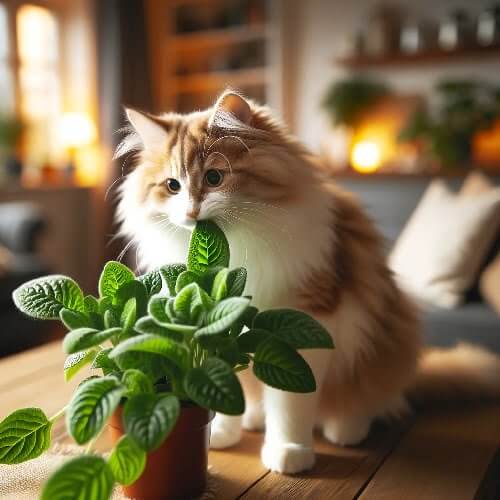Plants Poisonous to Cats in South Africa: A Comprehensive Guide
Gardening in South Africa is a delightful experience, offering a rich tapestry of flora that beautifies our homes and gardens. However, for cat owners, there’s an essential aspect to consider: the safety of our pets. Many common plants, while pleasing to the eye, can be perilous to our curious feline companions. This guide discusses plants that are poisonous to cats in South Africa, equipping you with the knowledge needed to protect your beloved pets.
Understanding Plant Toxicity in Cats
Cats, with their inquisitive nature, often explore their environment using their sense of taste and smell. This trait can lead them into harm’s way, especially when it comes to houseplants and garden vegetation. Different plants have varying levels of toxicity, with some causing mild irritations and others leading to severe health issues. Recognizing these plants and understanding their toxic effects is crucial for any responsible cat owner. It’s important to remember that cats may exhibit symptoms of poisoning even from indirect contact with these plants, such as from pollen or plant water.
Creating a Cat-Safe Garden and Home
To ensure the safety of your feline friends in both your garden and home:
- Prioritize non-toxic plants in your garden planning. Research plants before purchasing to ensure they are safe for cats. Consider plants like snapdragons, roses, and sunflowers, which are generally safe for cats.
- Indoors, opt for cat-friendly houseplants. Good options include spider plants, Boston ferns, and bamboo. These plants add greenery to your home without posing a risk to your cats.
- For plants that you can’t remove but are toxic to cats, consider physical barriers. Fences, raised plant beds, or indoor plant shelves can keep curious cats away from dangerous plants.
Creating a safe environment doesn’t mean sacrificing the beauty of your garden or the comfort of your home. It simply requires thoughtful planning and a bit of creativity.
Keeping Cats Safe from Poisonous Houseplants
Ensuring your indoor environment is cat-friendly involves several practical steps:
- Utilize vertical space by placing plants on high shelves or in hanging baskets, well out of your cat’s reach. This approach can be both aesthetically pleasing and effective in preventing access.
- If your cat is particularly persistent, consider using deterrents like citrus peels or commercially available pet repellents around your plants. These are often effective in keeping cats at bay.
- Regularly check your houseplants for any signs of nibbling or disturbance. If you notice your cat showing interest in a particular plant, it may be safer to remove it from your home.
By taking these steps, you can enjoy your houseplants while keeping your feline companions safe and healthy.
Common Plants Poisonous to Cats in South Africa
Lilium spp. (Lily)
The Lily, a common and popular garden plant, is extremely toxic to cats. All parts of the plant, including petals, leaves, pollen, and even the water in a vase of cut lilies, can cause kidney failure in cats. Cats can be poisoned by ingesting any part of the plant or by grooming pollen off their fur.
Narcissus spp. (Daffodil)
Daffodils, including their bulbs, are toxic to cats. Ingestion can cause vomiting, diarrhea, abdominal pain, and even cardiac arrhythmias or respiratory depression. The bulb is the most toxic part.
Rhododendron spp. (Azalea)
Azaleas can cause symptoms like vomiting, diarrhea, drooling, and lethargy in cats. In severe cases, ingestion can lead to coma or death due to the presence of grayanotoxins in the plant.
Tulipa spp. (Tulip)
The bulbs of Tulips are the most toxic part to cats. Ingesting tulip bulbs can cause significant oral irritation, excessive drooling, and nausea.
Hippeastrum spp. (Amaryllis)
Amaryllis is particularly dangerous to cats, causing symptoms such as vomiting, depression, diarrhea, abdominal pain, hypersalivation, anorexia, and tremors.
Chrysanthemum spp. (Chrysanthemum)
Chrysanthemums contain pyrethrins, which can cause vomiting, diarrhea, hypersalivation, incoordination, and dermatitis in cats.
Cycas revoluta (Sago Palm)
Every part of the Sago Palm is poisonous to cats, but the seeds contain the highest toxin level. Ingestion can lead to vomiting, bloody stools, damage to the stomach lining, and can be fatal.
Cyclamen spp. (Cyclamen)
The roots of the Cyclamen plant are the most toxic. They can cause severe vomiting and even death.
Nerium oleander (Oleander)
Oleander is highly toxic to cats and can cause symptoms like diarrhea, drooling, stomach pain, colic, depression, and death.
Euphorbia pulcherrima (Poinsettia)
Poinsettia is mildly toxic to cats. It can cause irritation to the mouth and stomach, sometimes causing vomiting.
Kalanchoe spp. (Widow’s-thrill)
Kalanchoe, or Widow’s-thrill, contains cardiac glycosides that can be harmful to cats, causing symptoms like vomiting, diarrhea, and in severe cases, abnormal heart rhythm.

Hyacinthus orientalis (Hyacinth)
Like Tulips, the bulbs of Hyacinths are the most toxic part. They can cause intense stomach problems, heart rate issues, and severe dermatitis.
Convallaria majalis (Lily of the Valley)
This plant contains cardiac glycosides, similar to digitalis, and can cause vomiting, diarrhea, a drop in heart rate, severe cardiac arrhythmias, and possibly seizures.
Colchicum autumnale (Autumn Crocus)
The Autumn Crocus is highly toxic, causing severe vomiting, gastrointestinal bleeding, liver and kidney damage, and respiratory failure.
Dieffenbachia spp. (Dieffenbachia)
Dieffenbachia causes oral irritation, drooling, nausea, difficulty swallowing, and vomiting in cats due to its insoluble oxalates.
Hedera helix (English Ivy)
English Ivy contains saponins that can cause vomiting, abdominal pain, hypersalivation, and diarrhea in cats.
Ricinus communis (Castor Bean)
The seeds of the Castor Bean plant contain ricin, a highly toxic substance to cats, causing severe abdominal pain, drooling, vomiting, diarrhea, excessive thirst, weakness, and loss of appetite.
Taxus spp. (Yew)
Yew contains toxic alkaloids that can cause central nervous system effects, difficulty breathing, gastrointestinal upset, and potential heart failure in cats.
Spathiphyllum spp. (Peace Lily)
The Peace Lily can cause oral irritation, excessive drooling, vomiting, difficulty swallowing, and increased urination in cats.
Digitalis purpurea (Foxglove)
Foxglove is highly toxic, containing cardiac glycosides that can cause vomiting, diarrhea, cardiac arrhythmias, and possibly death.
Crassula ovata (Jade Plant)
The Jade Plant may cause vomiting, lethargy, and incoordination in cats if ingested.
Philodendron spp. (Philodendron)
Like Dieffenbachia, Philodendrons contain insoluble oxalates which cause oral irritation, pain and swelling of the mouth, tongue, and lips, drooling, vomiting, and difficulty swallowing.
Aloe vera (Aloe Vera)
Although beneficial for humans, Aloe Vera can cause vomiting, diarrhea, and tremors in cats.
Symptoms of Plant Poisoning in Cats
The symptoms of plant poisoning in cats can vary widely depending on the plant ingested. Some general signs to watch out for include:
- Vomiting and diarrhea, which may contain blood.
- Excessive drooling, pawing at the mouth, or difficulty swallowing, indicative of oral irritation.
- Lethargy, weakness, or unusual sleepiness.
- A noticeable change in drinking or urinating habits, especially in cases of kidney-affecting toxins.
- Rapid or labored breathing and an irregular or rapid heartbeat.
It’s critical to act swiftly if any of these symptoms are observed. Delay in treatment can lead to more severe complications or even be life-threatening.
Immediate Actions if Your Cat is Poisoned
In the event that your cat ingests a poisonous plant:
- Safely remove any remaining plant material from your cat’s mouth or fur without causing distress.
- Do not try home remedies or induce vomiting unless specifically advised by a veterinarian.
- Take your cat to a veterinarian as soon as possible. If you can, bring a sample or a photo of the plant for accurate identification and treatment.
Immediate veterinary attention can make a significant difference in the outcome for your cat.
































